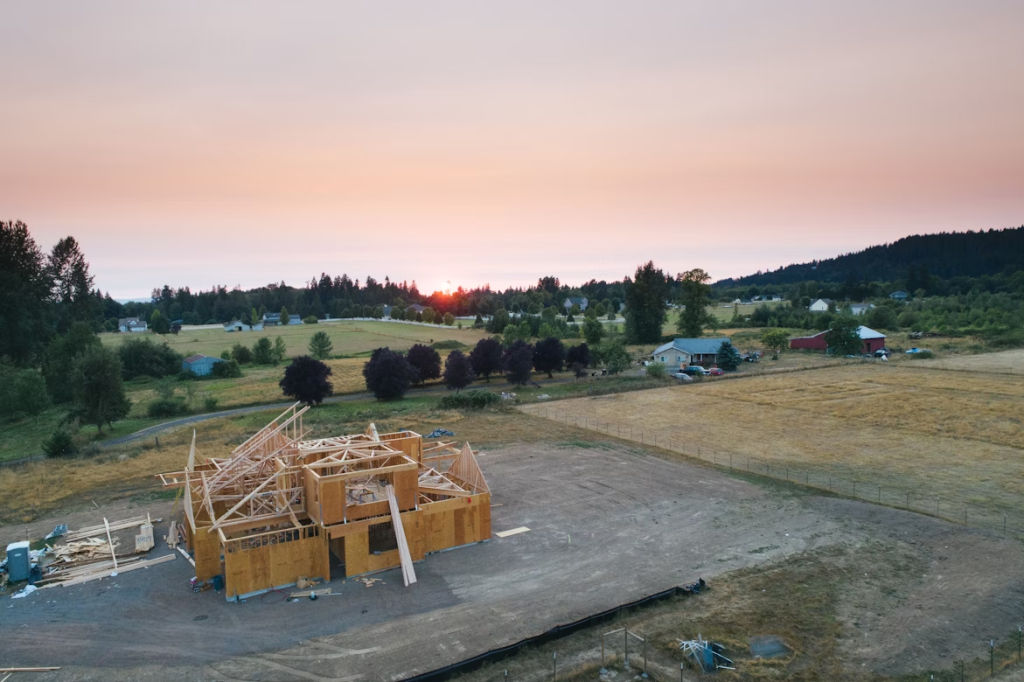When it comes to building a house in Australia, one of the first considerations is the cost to build a house. From purchasing land to choosing materials and hiring contractors, there are many factors that influence the final price.
As of 2025, building a home in Australia presents a unique set of challenges and opportunities. Understanding the key elements that impact the overall cost can help you plan your budget effectively.

This guide will take you through everything you need to know about the costs involved in building a home in Australia, from site preparation to final finishes.
Key Factors Influencing the Cost of Building a House
Several factors influence the cost of constructing a house, and understanding these elements will help you get a clearer picture of your potential expenses.
Location and Land Costs
One of the most significant factors when considering the cost of building a house is the location. The price of land can vary dramatically across Australia. In major cities like Sydney, Melbourne, and Brisbane, land prices are much higher due to demand and proximity to urban amenities.
In regional or rural areas, land may be considerably more affordable, but this could come with additional costs related to infrastructure and services.
The cost of land is one of the largest initial investments, and it’s essential to consider the location carefully when budgeting. Urban areas typically come with premium costs, while regional areas may offer opportunities for more affordable land, but possibly with additional hidden expenses related to access to services or transport.
Type of House and Design Complexity
The design and layout of your home will also affect the overall cost. A simple, single-storey design is typically more affordable than a multi-storey house.
Custom designs with unique features, such as high ceilings, expansive windows, or eco-friendly materials, will also add to the total cost. The more intricate your design, the more you’ll pay in terms of both materials and labour.
For example, a traditional four-bedroom home with basic features may cost significantly less than a custom-built, architect-designed home. Adding features like an open-plan kitchen, high-end bathroom finishes, or bespoke cabinetry can quickly increase the overall price.
Breakdown of the Costs to Build a House
Understanding the cost breakdown of a construction project is crucial to creating an accurate budget. The cost of building a house is typically divided into several main categories.
Site Preparation and Foundations
Before construction can even begin, you must prepare the site, which involves clearing the land, levelling it, and laying the foundation. The cost of site preparation can vary depending on the land’s condition and any challenges that might arise. For example, rocky or uneven land might require more extensive clearing and levelling, which will add to the cost.
The foundation itself can also vary depending on the house design. A simple slab foundation might cost less than a pier and beam foundation or a full basement. For most homes, foundation costs generally range between $10,000 and $30,000, depending on the complexity.
Structural Work
The structural phase involves building the framework, walls, roof, and other core components of the house. This is where the bulk of the construction costs will be spent. For a basic, single-storey house, structural work could cost between $100,000 and $250,000, depending on the size and design. For multi-storey homes, the cost will naturally be higher.
The type of materials used for the walls and roof will also affect the price. For instance, opting for timber-framed homes may be cheaper compared to brick or steel-framed houses. Roof material choices, such as metal, tiles, or shingles, will also impact the overall cost.
Interior Finishing and Fittings
Interior work includes everything from the floors to the walls and cabinetry. The materials and finishes chosen for the interior of the home can significantly increase costs. Basic flooring options such as carpet or vinyl will be more affordable than premium choices like hardwood or marble.
Kitchens and bathrooms are typically the most expensive rooms in the house when it comes to fitting and finishing, especially if custom designs or high-end materials are used.
For example, the cost of a mid-range kitchen fit-out may range from $20,000 to $50,000, while a luxury kitchen can exceed $100,000. Similarly, bathroom fit-outs range from $10,000 to $30,000, depending on the finishes, size, and complexity of the design.
Landscaping and Outdoor Features
Once the main house is built, the exterior landscaping can be a significant additional cost. Landscaping includes everything from planting trees and shrubs to building outdoor structures such as patios, decking, and fences. Landscaping costs can vary widely depending on how elaborate you want the outdoor space to be.
For basic landscaping, you may spend between $5,000 and $15,000, but for more elaborate gardens or outdoor living areas, costs can rise significantly. For instance, installing a swimming pool could add an extra $40,000 to $50,000 to your overall budget. If you choose to install outdoor kitchens or more complex garden designs, the costs will increase accordingly.
Additional Costs to Factor In
Aside from the primary construction costs, there are other expenses you need to account for when planning your house build. These include professional fees, permits, insurance, and contingency funds for unexpected costs.
Professional Services and Fees
Hiring an architect, engineer, or building designer is an essential part of the construction process. Depending on the complexity of your project, these fees can range from $5,000 to $20,000 or more.
An architect’s fees are typically a percentage of the total building cost, often ranging between 5% and 15%. If you’re building a highly custom-designed home, these professional fees can add up quickly.
Permits and Approvals
Building permits are required by law for any construction project, and these fees can vary depending on the location of your property. The cost for permits and approvals typically ranges from $500 to $3,000, depending on the scale of the project and your local council’s requirements.
Insurance and Warranties
It’s also important to consider insurance, including builders’ warranty insurance, which covers the builder in case the work is not completed to standard. Builders’ insurance generally costs between $1,000 and $3,000 for an average-sized home.
Contingency Budget
Unexpected costs are common in construction projects. To account for these surprises, it’s recommended to allocate a contingency fund of around 10% to 15% of the total budget. This buffer will cover unforeseen issues such as delays, changes to the scope of work, or rising material costs.
The Average Cost of Building a House in Australia in 2025
As of 2025, the average cost to build a house in Australia is typically between $1,500 and $3,500 per square metre, depending on the location, design, and materials chosen. The total cost will vary based on factors such as:
- Location: Major cities like Sydney or Melbourne have higher construction costs due to land prices and demand.
- House size: A larger house will naturally cost more to build, with a typical home averaging 200 square metres.
- Design complexity: Custom homes with unique features or complicated designs will cost more than standard, simpler builds.
In general, for a medium-sized, standard home, the total cost of construction can range between $350,000 and $700,000 or more, depending on the specifics of the project.
Frequently Asked Questions
How much does it cost to build a house in Australia in 2025?
The cost to build a house in Australia in 2025 typically ranges from $1,500 to $3,500 per square metre, depending on the location, materials, and design complexity.
What factors influence the cost of building a house?
Factors like location, house size, design complexity, materials, and site conditions all influence the cost of building a house. Permits, professional fees, and landscaping also add to the final price.
How can I manage unexpected building costs?
It’s recommended to set aside a contingency budget of around 10% to 15% of your total building cost to cover unexpected expenses. This helps manage unforeseen issues like delays or material price fluctuations.
Conclusion
Building a house in Australia in 2025 requires careful planning and budgeting. The cost to build a house will vary significantly depending on several factors, including location, house design, materials, and the complexity of the build.
By understanding these variables and planning ahead, you can ensure that your construction project stays on track and within budget. It’s important to consult with professionals and create a contingency plan to account for unexpected costs, ensuring your dream home becomes a reality without financial surprises.
